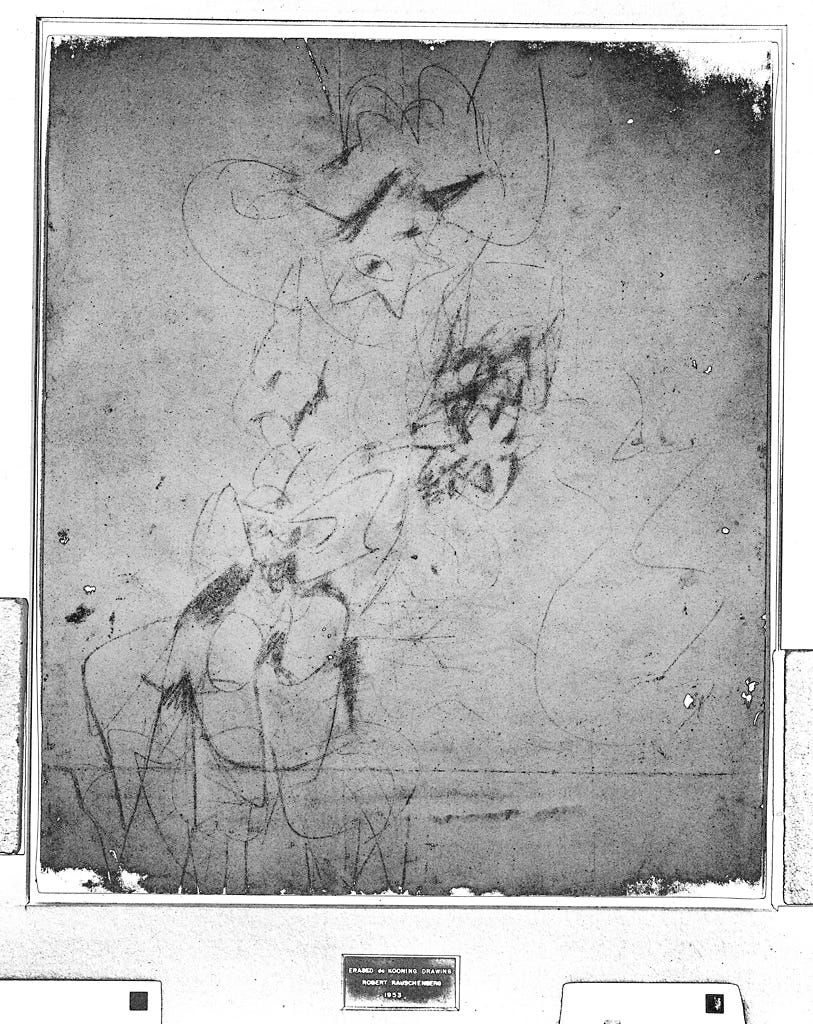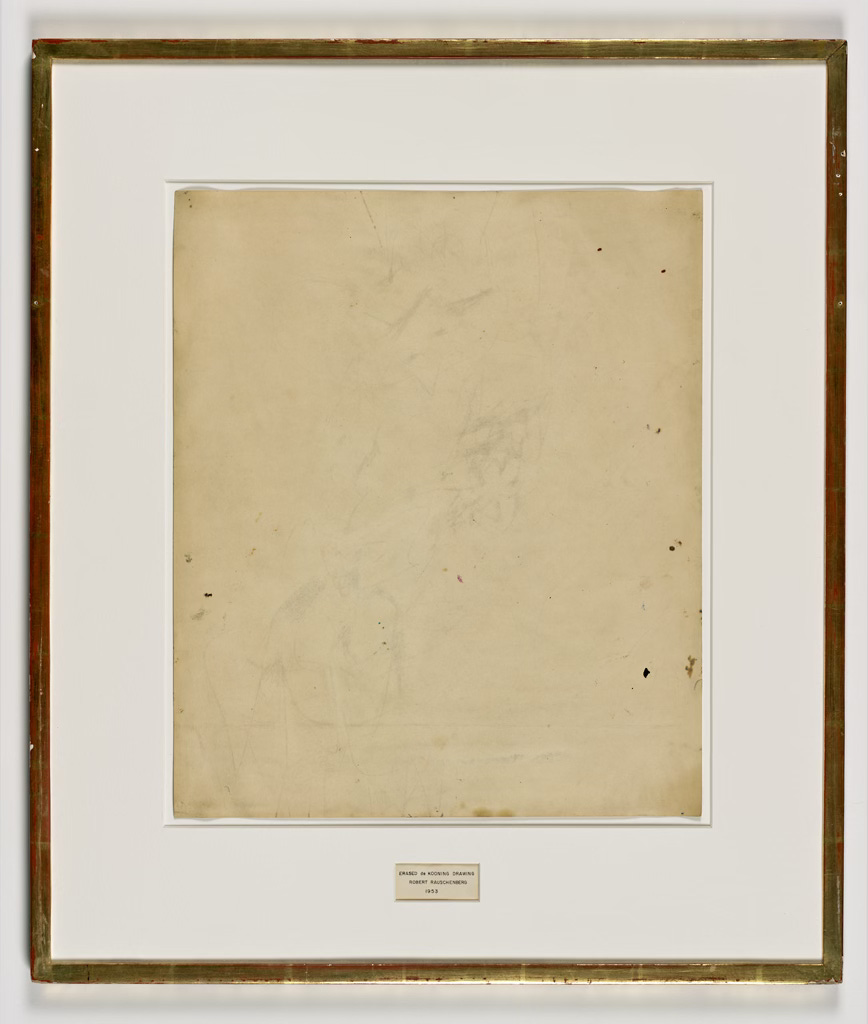Last month I led a webinar on creative practice in spiritual companionship. In a moment of serendipity I was asked to facilitate just as I had been thinking (again) about Robert Rauchenburg’s Erased de Kooning Drawing made in 1953. As the story goes, Rauschenberg, in his quest to create artworks that explore the limits and definitions of art, wanted to make an artwork entirely through erasure. He asked Willem de Kooning, who was in the prime of his career, for a drawing that Rauschenberg would erase. de Kooning reluctantly agreed and handed over a drawing that he thought was particularly hard to erase. One month and 40 erasers later, Rauschenberg signed the work and named the piece Erased de Kooning Drawing. It now hangs in the SFMOMA.
What I find captivating about this work and concept is what its absence forces you to notice. What marks remain? What bold lines have become shadows and smudges? What meaning has changed and what meaning remains? What does this visual emptiness bring up for the viewer?

I think about how my lived experiences mark me, both anticipated and surprising. I think of the grief and gratitude that accompany them. I think about, how over time, some of the marks change. They make new and different meaning to me as they overlap, interlock, and unfold. Where is Spirit present with them? How are they shaping how I see and engage with Divine Love? With all of this in mind, I shared a mark-making and erasing practice as a way to hold this sort of creative attention as prayer.
In the session we began with a poem to ground our time and then, as an embodied response we moved pencils across paper. After some personal reflection, participants had a time of sharing. Then we repeated the process again, but this time we smudged erasers across paper instead. The webinar was well-received and with the encouragement of some friends I decided to offer it on my own.
An Invitation
During the coming liturgical year I will be offering the practice once per season along with few other holy days. We’ll meet for a little over an hour to listen to Holy Spirit through mark-making and erasing. In each season we will center on some of their themes and see what surfaces. Here are the tentative dates, times and themes:
Advent: December 11 from 12pm to 1:15 pm EST | Beginning, Keeping Vigil, Longing
Christmas: December 29 from 8pm to 9:15 pm EST | Incarnation, Wonder, Foretaste
Epiphany: January 6 from 12pm to 1:15 pm | Quest, Revelation, Dreams
Ash Wednesday: March 5 from 12pm to 1:15 pm EST | Mortality, Interior Journey, Wilderness
Lent/Holy Week: April 16 from 12pm to 1:15 pm EST | Sorrow, Desolation, Silence
Eastertide: May 14th from 12pm to 1:15 pm EST | Resurrection, Awakening, Transformation
Pentecost: June 8 from 7pm to 8:15 pm | Wind, Indwelling, Presence
Ordinary Time: July 17 from 7pm to 8:15 pm EST | Wholeness, Attention, Rhythms
As a practice of reciprocity, I am asking for a contribution per session. Here are three ways to consider contributing1:
Give generously if you have access to abundant family resources.
Give fully if you can meet your essential needs.
Give modestly if you sometimes struggle to meet essential needs.
My intention is not for you to leave the session with an artwork, but to notice what you are present to and how Divine Love is present with you in it. Creative skills are not necessary and only simple materials are needed: a piece of paper, a pencil, an eraser, and you are enough. If you want to bring something more, like charcoal, you are welcome to do so. There will be no show and tell. This is a practice for your own communion with Spirit. Please consider joining me to engage with God through creative attention.
Links to register for future sessions will be available soon.
FAQ
Are you a therapist/art therapist?
No, I’m not. I am a spiritual director with an MFA in Studio Art. I have used creative experiments and practice with directees, and in my own spiritual journey.
Will these sessions be recorded?
There is real power in engaging with God in community practice. Passing along the recording changes the intent of the experiment. If you can’t make it to a particular session, sign up for a later one. Any poems, readings, reflection questions, or shuttles2 used in a session will be emailed after the session.
Why do you call it mark-making?
The term mark-making is like visual lo-fi. It’s primal, immediate, and instinctual. Drawing can be all of these things too, however, it can often carry the pressure of performance, polish and outcome. It sounds formal and heightens expectations for artistic ability. It is also a work of intentional rendering and translation on some level and this is not my interested here. To me doodling is what you do when you’re board, and sketching is preparatory work for a drawing.
Adopted and adapted from Wild Mountain Retreats.
I learned the term “shuttle” from Francis Weller, Psychotherapist, Author and Soul Activist. They are brief, partial sentences that carry you into a writing or drawing practice. A couple of examples are: “I remember…” or “I no longer…” We will be using shuttles in our practice.





